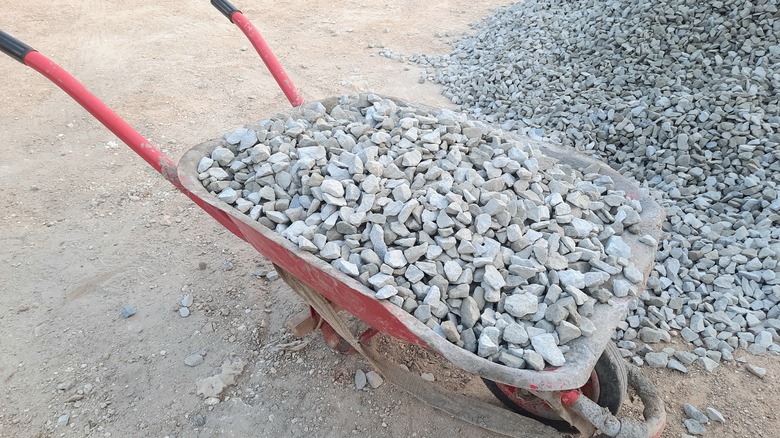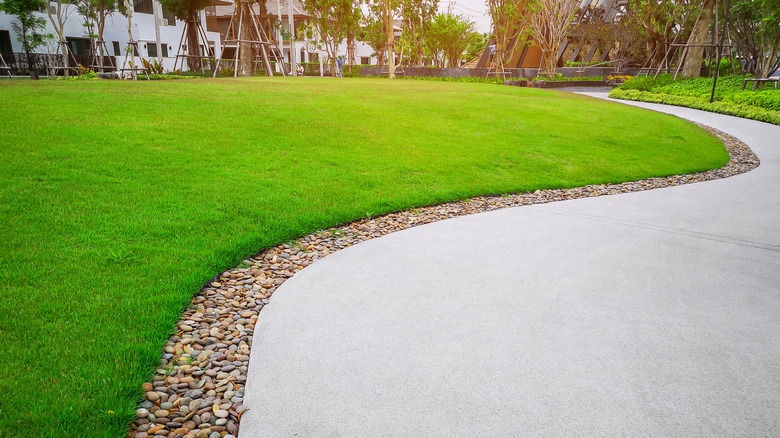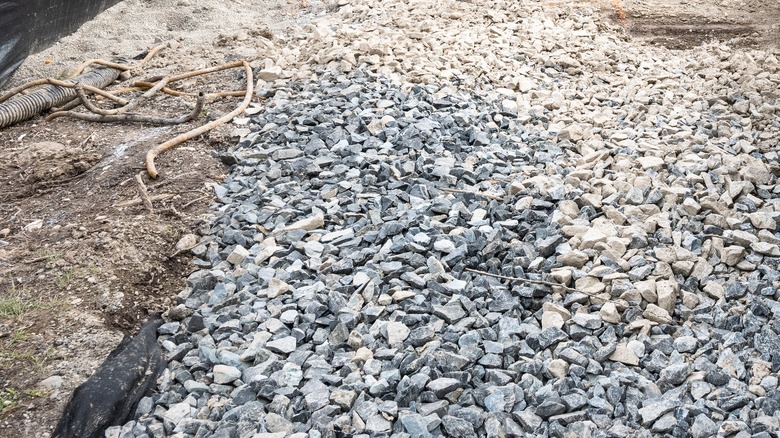Mistakes Everyone Makes When Using Gravel In Landscaping
Landscaping with gravel can significantly improve the aesthetic and function of your outdoor areas. However, despite its many benefits, people often make avoidable mistakes that can undermine their gravel projects. Some of the most common errors that can happen when using gravel include skipping the base layer, using the wrong size or type of gravel, neglecting proper edging, not considering drainage, and forgetting to maintain your gravel installations. These mistakes can lead to all kinds of issues like poor drainage, displaced gravel, and unsightly edges, which can detract from the overall beauty and durability of your landscaping.
One of the first common mistakes homeowners make when using gravel in landscaping is skipping the base layer. The base layer is a crucial foundation to prevent gravel from shifting, sinking, or becoming uneven over time. Without a proper base layer, your gravel may sink, need frequent readjusting, or promote pesky weeds growing on your gravel. To avoid this, put down a layer of landscaping fabric or a gravel base before adding your top layer of gravel. This simple step can help stabilize the gravel, improve drainage, and reduce weed growth, providing a durable landscape. Make sure your base layer is compacted well, and use materials like crushed stone or rock for the best results. Providing a solid foundation for your gravel is one of the best ways to preserve and establish the longevity of your gravel landscape.
Gravel size and containment
Another common mistake you don't want to make when using gravel in your landscape is not considering the different types of gravel for your specific project. Gravel comes in a variety of sizes and compositions, each suited for different purposes. Using the wrong one can lead to issues like instability, breaking down and compacting over time, and creating uneven surfaces. Some landscape gravels, like pea gravel, aren't ideal for driveways because they shift under heavy loads, but will look great around your garden pathways and flowers — whereas crushed gravel would be better for a driveway due to its stability and drainage. You might have to balance aesthetics with practicality depending on your gravel landscape project. But always consider using the best type and size of gravel for your needs.
Next, you'll want to provide proper edging for your landscaping. Neglecting defined borders can cause your gravel to quickly become unsightly, allowing it to spread and become disorganized. This not only detracts from the visual appeal, but can also create maintenance issues if the gravel spills into unwanted areas like your lawn or garden beds. Make sure you plan to incorporate the edging before you lay the gravel. You can use metal, plastic, wood, or stone edging, whichever suits your style best, to keep the gravel in place. You'll want to regularly inspect the edging so it remains intact and make any necessary repairs to maintain the quality and appearance of your gravel landscape.
Drainage and maintenance
Gravel is often praised for its excellent drainage properties, but its effectiveness can be canceled out if the area itself doesn't have proper drainage. Without drainage, the water can accumulate beneath the gravel, leading to waterlogging and compromising the ground underneath. If you live in an area that receives heavy rainfall or has poor soil, this might be particularly problematic. You'll want to assess the natural drainage of your landscape before laying down gravel. You also might need to grade the area to direct the water flow to appropriate drainage sites and away from your home and nearby structures. Additionally, incorporating a layer of coarse gravel beneath the top layer can further improve drainage by allowing water to pass through more easily.
Finally, the last common mistake people make when using gravel in landscaping is forgetting to maintain their gravel landscape over time. Gravel can be relatively low-maintenance compared to other landscaping materials. But it still requires upkeep to remain effective and attractive. Depending on your gravel site, it can often become compacted or subject to weed growth. You can periodically rake the gravel to loosen compacted areas and keep it evenly distributed. Adding a fresh layer every year can also help maintain its function and appearance. You can prevent weeds by using a weed barrier or promptly applying appropriate herbicides to keep your gravel tidy. Regular maintenance not only preserves your gravel landscape but also extends the lifespan of your gravel installation.


